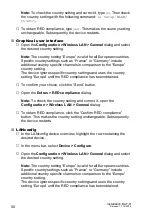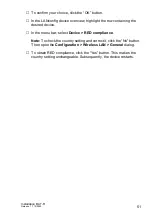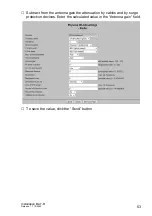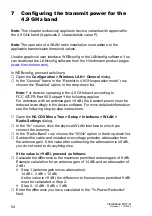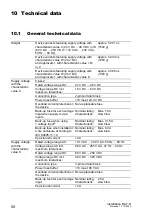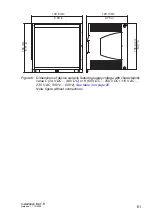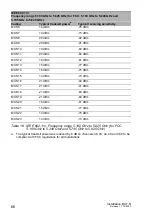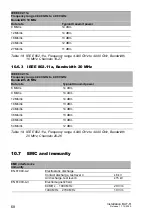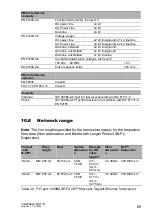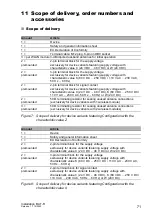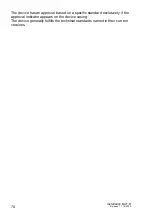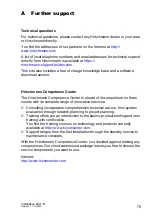
Installation BAT-R
Release 17 12/2020
63
10.5
Receiving sensitivity, transmit power, and
data rate of the WLAN module version
EWLAN1 (Approvals 2, characteristic
value M, V or 9)
The values shown in the following tables are the maximum values of the
WLAN module version EWLAN1. The values are in no case to be perceived
as a guaranteed property of the overall product. For some country profiles,
the module reduces data rate and transmit power automatically. The reason
for this are national standards.
10.5.1 IEEE 802.11b
10.5.2 IEEE 802.11g
IEEE 802.11b
Frequency range 2.412 GHz to 2.472 GHz (for FCC: 2.412 GHz to 2.462 GHz)
Data rate
Typical transmit power
a
a. The typical transmit power was reduced as follows to be compliant with FCC regulations for
all modulations:
- Channels 4, 7 and 8: Reduction by 3 dB
- Channels 2, 3, 5, 6 and 9: Reduction by 4 dB
- Channel 10: Reduction by 5 dB
- Channel 1: Reduction by 6 dB
- Channel 11: Reduction by 8 dB
Typical receiving sensitivity
1 Mbit/s
19 dBm
-94 dBm
11 Mbit/s
19 dBm
-94 dBm
Table 12: IEEE 802.11b, Frequency range 2.412 GHz to 2.472 GHz (for FCC:
2.412 GHz to 2.462 GHz)
IEEE 802.11g
Frequency range 2.412 GHz to 2.472 GHz (for FCC: 2.412 GHz to 2.462 GHz)
Data rate
Typical transmit power
a
Typical receiving sensitivity
6 Mbit/s
22 dBm
-94 dBm
9 Mbit/s
22 dBm
-94 dBm
12 Mbit/s
22 dBm
-90 dBm
18 Mbit/s
22 dBm
-89 dBm
24 Mbit/s
22 dBm
-85 dBm
36 Mbit/s
21 dBm
-82 dBm
48 Mbit/s
20 dBm
-78 dBm
54 Mbit/s
19 dBm
-77 dBm
Table 13: IEEE 802.11g, Frequency range 2.412 GHz to 2.472 GHz (for FCC:
2.412 GHz to 2.462 GHz)


